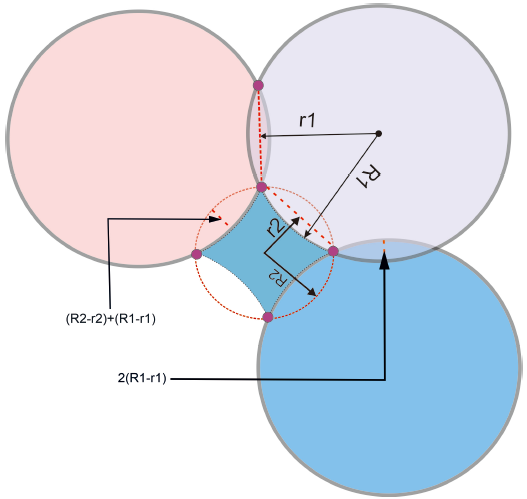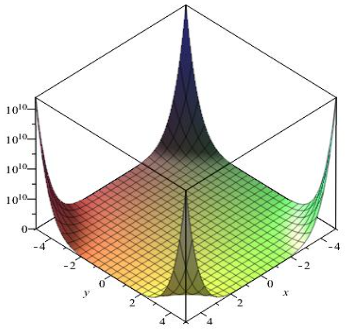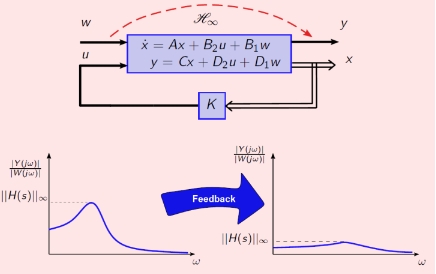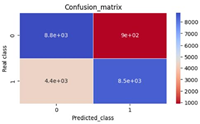Dynamics of insect predator and mosquito prey system with mutual interference as a factor for the co-occurrence: Validating through models
Abstract
Several models have been proposed as an extension to the classical Holling’s disc equation to evaluate the predator and prey interactions and their applied aspects in biological control and population regulation of the target organisms. In a one-prey and two-predator dynamic system with mutual interference m as a quadratic parameter of predator density, an evaluation was made of the resultant impact on the prey. A simulation was carried out to see the finite-time extinction of prey and the stability of the system at origin, i.e., when all three species are extinct. We assumed the data obtained was for the interactions between the mosquito and the water bug predators that are common in the freshwater wetlands and involved in population regulation. Despite the benefits to the prey population due to interference and competition, the expected extinction of prey in a finite time is still observed. With varying magnitudes of m, the declining growth curve of the prey population shifted. The equation proposed was also compared with the Crowley-Martin functional response, and considerable differences were observed in selected instances when compared to the growth rate of the predators in a species-specific manner. The stability of the system was deduced from the eigenvalues of the Jacobian matrix at the origin to prove the extinction is stable. Our assessment supports the possible cooccurrence of predators and mosquito prey in the wetlands, with mutual interference being one of the major factors.
References
[1]Murdoch WW, Chesson J, Chesson PL. Biological control in theory and practice. The American Naturalist 1985; 125(3): 344–366. doi: 10.1086/284347
[2]Barbosa PA. In: Barbosa PA (editor). Conservation Biological Control, 1st ed. Academic Press; 1998. 396p.
[3]Murdoch WW. Population regulation in theory and practice. Ecology 1994; 75(2): 271–287. doi: 10.2307/1939533
[4]Saha N, Aditya G, Saha GK. Prey preferences of aquatic insects: Potential implications for the regulation of wetland mosquitoes. Medical and Veterinary Entomology 2013; 28(1): 1–9. doi: 10.1111/mve.12003
[5]Kundu M, Sharma D, Brahma S, et al. Insect predators of mosquitoes of rice fields: Portrayal of indirect interactions with alternative prey. Journal of Entomology and Zoology Studies 2014; 2(5): 97–103.
[6]Bellows TS, Fisher TW, Caltagirone LE, et al. In: Bellows TS, Fisher TW, Caltagirone LE, et al. (editors). Handbook of Biological Control, 1st ed. Academic Press; 1999. 1046p. doi: 10.1016/B978-0-12-257305-7.X5046-2
[7]Finke DL, Denno RF. Spatial refuge from intraguild predation: Implications for prey suppression and trophic cascades. Oecologia 2006; 149(2): 265–275. doi: 10.1007/s00442-006-0443-y
[8]Mogi M, Memah V, Miyagi I, et al. Mosquito (Diptera: Culicidae) and predator abundance in irrigated and rain-fed rice fields in North Sulawesi, Indonesia. Journal of Medical Entomology 1995; 32(3): 361–367. doi: 10.1093/jmedent/32.3.361
[9]Bambaradeniya C, Edirisinghe J, De Silva D, et al. Biodiversity associated with an irrigated rice agro-ecosystem in Sri Lanka. Biodiversity and Conservation 2004; 13: 1715–1753. doi: 10.1023/B:BIOC.0000029331.92656.de
[10]Das PK, Sivagnaname N, Amalraj DD. Population interactions between Culex vishnui mosquitoes and their natural enemies in Pondicherry, India. Journal of Vector Ecology 2006; 31(1): 84–88. doi: 10.3376/1081-1710(2006)31[84:PIBCVM]2.0.CO;2
[11]Fontanarrosa MS, Marinone MC, Fischer S, et al. Effects of flooding and temperature on Aedes albifasciatus development time and larval density in two rain pools at Buenos Aires University City. Memórias do Instituto Oswaldo Cruz 2000; 95(6): 787–793. doi: 10.1590/S0074-02762000000600007
[12]Campos RE, Fernández LA, Sy VE. Study of the insects associated with the floodwater mosquito Ochlerotatus albifasciatus (Diptera: Culicidae) and their possible predators in Buenos Aires Province, Argentina. Hydrobiologia 2004; 524(1): 91–102. doi: 10.1023/B:HYDR.0000036122.10578.d0
[13]Dale PER, Knight JM. Wetlands and mosquitoes: A review. Wetlands Ecology and Management 2008; 16(4): 255–276. doi: 10.1007/s11273-008-9098-2
[14]Wootton JT. The nature and consequences of indirect effects in ecological communities. Annual Review of Ecology and Systematical 1994; 25(1): 443–466. doi: 10.1146/annurev.es.25.110194.002303
[15]Blaustein L, Chase JM. Interactions between mosquito larvae and species that share the same trophic level. Annual Review of Entomology 2007; 52: 489–507. doi: 10.1146/annurev.ento.52.110405
[16]Juliano SA. Species interactions among larval mosquitoes: Context dependence across habitat gradients. Annual Review of Entomology 2009; 54(1): 37–56. doi: 10.1146/annurev.ento.54.110807.090611
[17]Sivagnaname N. Selective and frequency dependent predation of aquatic mosquito predator Diplonychus indicus Venkatesan & Rao (Hemiptera: Belostomatidae) on immature stages of three mosquito species. Entomological Research 2009; 39(6): 356–363. doi: 10.1111/j.1748-5967.2009.00243.x
[18]Brahma S, Aditya G, Sharma D, et al. Influence of density on intraguild predation of aquatic Hemiptera (Heteroptera): Implications in biological control of mosquito. Journal of Entomological and Acarological Research 2014; 46(1): 6–12. doi: 10.4081/jear.2014.1977
[19]Brahma S, Sharma D, Kundu M, et al. Mosquito prey vulnerability in intraguild predation between Ranatra filiformis and Anisops bouvieri: Implications in biological control. Proceedings of the Zoological Society 2015; 68(1): 36–44. doi: 10.1007/s12595-013-0093-0
[20]Brahma S, Sharma D, Kundu M, et al. Intraguild predation in Heteroptera: Effects of density and predator identity on Dipteran prey. Neotropical Entomology 2015; 44(4): 374–384. doi: 10.1007/s13744-015-0286-5
[21]Saha N, Kundu M, Saha GK, Aditya G. Alternative prey influence the predation of mosquito larvae by three water bug species (Heteroptera: Nepidae). Limnological Review 2020; 20(4): 173–184. doi: 10.2478/limre-2020-0017
[22]Elliott J. Interspecific interference and the functional response of four species of carnivorous stoneflies. Freshwater Biology 2003; 48(9): 1527–1539. doi: 10.1046/j.1365-2427.2003.01106.x
[23]Saha N, Aditya G, Bal A, Saha GK. A comparative study of predation of three aquatic heteropteran bugs on Culex quinquefasciatus larvae. Limnology 2007; 8(1): 73–80. doi: 10.1007/s10201-006-0197-6
[24]Saha N, Aditya G, Bal A, Saha GK. Comparative studies on functional response of common heteropteran bugs of East Calcutta Wetlands, Kolkata, India. International Review of Hydrobiology 2007; 92(3): 242–257. doi: 10.1002/iroh.200610939
[25]Holling CS. Some characteristics of simple types of predations and parasitism. The Canadian Entomologist 1959; 91(7): 385–398. doi: 10.4039/Ent91385-7
[26]Antwi-Fordjour K, Parshad RD, Beauregard MA. Dynamics of a predator-prey model with generalized Holling type functional response and mutual interference. Mathmatical Biosciences 2020; 326: 108407. doi: 10.1016/j.mbs.2020.108407
[27]Case TJ. An Illustrated Guide to Theoretical Ecology. Oxford University Press; 2000.
[28]Watt KEF. A mathematical model for the effect of densities of attacked and attacking species on the number attacked. The Canadian Entomologist 1959; 91(3): 129–144. doi: 10.4039/Ent91129-3
[29]Hassell MP, Varley GC. New inductive population model for insect parasites and its bearing on biological control. Nature 1969; 223(5211): 1133–1137. doi: 10.1038/2231133a0
[30]Roger DJ, Hassell MP. General models for insect parasite and predator searching behaviour: Interference. Journal of Animal Ecology 1974; 43(1): 239–253. doi: 10.2307/3170
[31]Beddington JR. Mutual interference between parasites or predators and its effect on searching efficiency. Journal of Animal Ecology 1975; 44(1): 331–340. doi: 10.2307/3866
[32]Hassell MP, Lawton JH, May RM. Patterns of dynamical behaviour in single-species populations. Journal of Animal Ecology 1976; 45(2): 471–486. doi: 10.2307/3886
[33]Santra PK, Mahapatra GS. Dynamical study of discrete-time prey-predator model with constant prey refuge under imprecise biological parameters. Journal of Biological Systems 2020; 28(3): 681–699. doi: 10.1142/S0218339020500114
[34]Mahapatra GS, Santra PK, Bonyah E. Dynamics on effect of prey refuge proportional to predator in discrete-time prey-predator model. New Perspectives in Nonlinear Dynamics of Complex Systems 2021; 2021: 6209908. doi: 10.1155/2021/6209908
[35]Santra PK, Mahapatra GS, Phaijoo GR. Bifurcation analysis and chaos control of discrete prey-predator model incorporating novel prey-refuge concept. Computational and Mathematical Methods 2021; 3(6): e1185. doi: 10.1002/cmm4.1185
[36]Sarwardi S, Mandal PK, Ray S. Analysis of a competitive prey-predator system with a prey refuge. Biosystems 2012; 110(3): 133–148. doi: 10.1016/j.biosystems.2012.08.002
[37]Sarwardi S, Mandal PK, Ray S. Dynamical behaviour of a two-predator model with prey refuge. Journal of Biological Physics 2013; 39(4): 701–722. doi: 10.1007/s10867-013-9327-7
[38]Morin PJ. Community Ecology. John Wiley & Sons; 2011. doi: 10.1002/9781444341966
[39]Hassell MP. Mutual interference between searching insect parasites. Journal of Animal Ecology 1971; 40(2): 473–486. doi: 10.2307/3256
[40]Meer JVD, Ens BJ. Models of interference and their consequences for the spatial distribution of ideal and free predators. Journal of Animal Ecology 1997; 66(6): 846–858. doi: 10.2307/6000
[41]DeLong JP, Vasseur DA. Mutual interference is common and mostly intermediate in magnitude. BMC Ecology 2011; 11: 1. doi: 10.1186/1472-6785-11-1
[42]Mulder C, Hendricks AJ. Half-saturation constants in functional responses. Global Ecology and Conservation 2014; 2: 161–169. doi: 10.1016/j.gecco.2014.09.006
[43]Crowley PH, Martin EK. Functional responses and interference within and between year classes of a dragonfly population. Journal of the North American Benthological Society 1989; 8(3): 211–221. doi: 10.2307/1467324
[44]Skalski GT, Gilliam JF. Functional responses with predator interference: Viable alternatives to the Holling type II model. Ecology 2001; 82(11): 3083–3092. doi: 10.1890/0012-9658(2001)082[3083:FRWPIV]2.0.CO;2
[45]Papanikolaou NE, Dervisoglou S, Fantinou A, et al. Predator size affects the intensity of mutual interference in a predatory mirid. Ecology and Evolution 2021; 11(3): 1342–1351. doi: 10.1002/ece3.7137
[46]Sana N, Aditya G, Bal A, Saha GK. Influence of light and habitat on predation of Culex quinquefasciatus (Diptera: Culicidae) larvae by the waterbugs (Hemiptera: Heteroptera). Insect Science 2008; 15(5): 461–469. doi: 10.1111/j.1744-7917.2008.00234.x
[47]Saha N, Aditya G, Saha GK. Habitat complexity reduces prey vulnerability: An experimental analysis using aquatic insect predators and immature dipteran prey. Journal of Asia-Pacific Entomology 2009; 12(4): 233–239. doi: 10.1016/j.aspen.2009.06.005
[48]Brahma S, Sharma D, Banerjee S, et al. Influence of habitat complexity on the prey mortality in IGP system involving insect predators (Heteroptera) and prey (Diptera): Implications in biological control. PLoS One 2022; 17(3): e0264840. doi: 10.1371/journal.pone.0264840
[49]Soetaert K, Herman PMJ. A Practical Guide to Ecological Modelling: Using R as a Simulation Platform. Springer; 2009. 372p. doi: 10.1007/978-1-4020-8624-3
[50]Stubben C, Milligan B. Estimating and analyzing demographic models using the popbio package in R. Journal of Statistical Software 2007; 22(11): 1–23. doi: 10.18637/jss.v022.i11
[51]Soetaert K, Petzoldt T, Setzer RW. Solving differential equations in R: Package deSolve. Journal of Statistical Software 2010; 33(9): 1–25. doi: 10.18637/jss.v033.i09
[52]ggplot2: Create elegant data visualisations using the grammar of graphics. Available online: https://ggplot2.tidyverse.org/reference/ggplot2-package.html (accessed on 9 November 2023).
[53]Murrell P. Recent changes in grid graphics. R News 2005; 5(1): 12–20.
[54]Sievert C. Interactive Web-Based Data Visualization with R, Plotly, and Shiny, 1st ed. CRC Press; 2020. doi: 10.1201/9780429447273
[55]DeLong JP. The body-size dependence of mutual interference. Biology Letter 2014; 10(6). doi: 10.1098/rsbl.2014.0261
[56]Murdoch WW, Sih A. Age-dependent interference in a predatory insect. Journal of Animal Ecology 1978; 47(2): 581–592. doi: 10.2307/3802
[57]Fox LR, Murdoch WW. Effects of feeding history on short-term and long-term functional responses in Notonecta hoffmanni. Journal of Animal Ecology 1978; 47(3): 945–959. doi: 10.2307/3680
[58]Sih A. Stability, prey density and age/dependent interference in an aquatic insect predator, Notonecta hoffmanni. Journal of Animal Ecology 1981; 50(2): 625–636. doi: 10.2307/4079
[59]Fernando MHJP, Hassell MP. Predator-prey responses in an acarine system. Population Ecology 1980; 22(2): 301–322. doi: 10.1007/BF02530853
[60]Pajunen VI. The effect of age-dependent interference on larval development in Callicorixa producta (Reut.) (Hemiptera, Corixidae). Annales Zoologici Fennici 1982; 19(3): 221–224.
[61]Abrahams MV, Mangel M, Hedges K. Predator-prey interactions and changing environments: Who benefits? Philosophical Transactions of the Royal Society B: Biological Sciences 2007; 362(1487): 2095–2104. doi: 10.1098/rstb.2007.2102
[62]Bertossa RC. Morphology and behaviour: Functional links in development and evolution. Philosophical Transactions of the Royal Society Lond B: Biological Sciences 2011; 366(1574): 2056–2568. doi: 10.1098/rstb.2011.0035
[63]Schmitz O. Predator and prey functional traits: Understanding the adaptive machinery driving predator–prey interactions. F1000 Research 2017; 6: 1767. doi: 10.12688/f1000research.11813.1
Copyright (c) 2023 Chandrani Mukherjee, Krishna Pada Das, Goutam Panigrahi

This work is licensed under a Creative Commons Attribution 4.0 International License.











